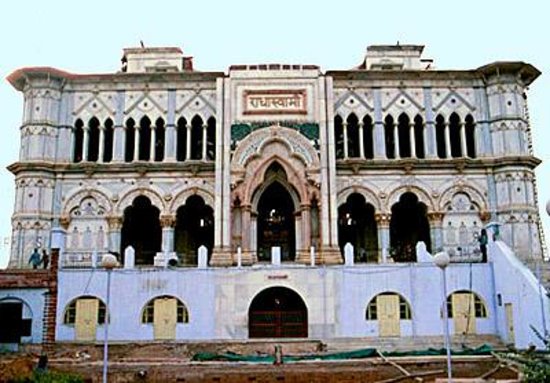Soami Bagh Samadhi
Dayal Bagh, Agra, Uttar Pradesh, 282005

“The socio-religious revolution or renaissance which took place in India in the nineteenth century is generally known for its three facets: the change in Indian thought current under the hypnotic impact of the West; a positive leaning towards puritanic revivalism as a reaction to the influx of western ideas; and a deliberate attempt at synthesis of the Oriental and the Occidental. But besides these currents, there was one more – a spontaneous outburst of an inner urge of the Spirit, which was far away from any external influence whatsoever. The father of this spiritual renaissance was Soamiji Maharaj, the founder of the Radhasoami Faith, who started his teachings as early as the twenties of the nineteenth century. Whatever he said or wrote was the outcome of his intuitive realization and mystic revelations. Under this spiritual impulse he could draw a super-sensitive and English educated disciple like Hazur Maharaj towards him. The devotion of the disciple for the Master was matchless in form and precedence. And it was on his repeated requests that Soamiji Maharaj founded this esoteric faith in 1861. The chief characteristics of this faith are love and devotion. It revitalized the medieval Bhakti trends and revived the ancient Guru traditions. The faith presents a new concept of the Supreme Being, a novel revelation of the name “Radhasoami” and introduces a well-defined and developed method of internal practice — surat-shabd-yoga—to the seekers after Truth. Not only an ascetic but also a man living in family can practise this Yoga. The faith has many other spiritual observances and a well spelled code of moral conduct to be followed by devotees. The faith owes its systematization to the second guru, Rai Saligram Bahadur (Hazur Maharaj), who was its real architect. The Radhasoami Faith has made a remarkable contribution in the socio-religion field as well. The founder gurus of the faith made direct hit upon the prevalent malpractices and anomalies in the indigenous socio-religious beliefs. They advocated for steady and gradual reforms in Indian society and simplified religion so as to make it accessible to all who desire salvation from worldly bondage, without any distinction of caste, colour and nationality.”
Source : wikipedia
The construction of the Soami Bagh was commenced in 1908 and people believed that the construction of the building will never come to an end. In fact many people argued that the monument is the “next Taj Mahal”. One of the major tourist attractions of the monument is its carvings in stone that comprises of blending or colored marble. The marble of the tomb contributes to its brilliant appearance making it an extraordinary monument in India.
Soamiji Maharaj purchased Soami Bagh, where he used to perform spiritual practices there. Later on Soami Bagh became the abode to the Samadh of Soamiji Maharaj. Located adjacent to the mausoleum, there is Bhajan Gar the place where, Soamiji Maharaj carried out the spiritual practices during his lifetime; the Bhajan Ghar also houses satsang once per day.
Near the Soami Bagh Samadhi there are some other buildings too. Bhandara festivals are celebrated here as a tribute to past Sant Sat Gurus and Satsang is from all over the world, come here to attend the festival. These buildings have provided the kitchen facilities for Bhandara festivals held at Soami Bagh several times every year.
The Swami Bagh Samadhi is mainly the mausoleum of Huzur Swamiji Maharaj (Shri Shiv Dayal Singh Seth) in the Swamibagh section, on Bhagwan Talkies to Dayal bagh road, in the outskirts of the city. He established the Radhaswami Faith. The devotees regard the Samadhi to be sacred.
https://www.youtube.com/watch?v=7gaJsMYhBPQ
Reviews
Visiting Hours : All days of the week, 9.00am to 5.00pm


Rate this article